Julia A. Drose, BA, RDMS, RDCS, RVT
- Associate Professor
- Department of Radiology
- Chief Sonographer
- Divisions of Diagnostic Ultrasound and Prenatal Diagnosis & Genetics
- University of Colorado Hospital
- Denver, Colorado
Feldene dosages: 20 mg
Feldene packs: 60 caps, 90 caps, 120 caps, 180 caps, 270 caps, 360 caps
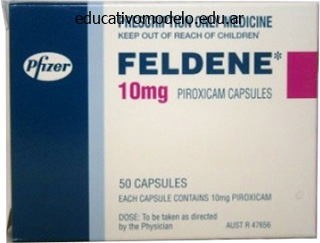
20 mg feldene amex
In addition, stimulation from the elements of the mind concerned with voluntary respiratory movements and feelings can occur. Inspiration begins when the combined input from all these sources causes the manufacturing of action potentials in the neurons that stimulate respiratory muscular tissues. The neurons stimulating the muscles of respiration additionally stimulate the neurons within the medullary respiratory center that are responsible for stopping inspiration. The neurons answerable for stopping inspiration additionally receive enter from the pontine respiratory group, stretch receptors in the lungs, and probably other sources. When these inhibitory neurons are activated, they inhibit the neurons that stimulate respiratory muscle tissue. Relaxation of respiratory muscle tissue ends in expiration, which lasts approximately three seconds. Although the medullary neurons set up the essential rate and depth of ventilation, their actions may be influenced by enter from different elements of the brain and by enter from peripherally located receptors. Dizziness or a giddy feeling can result as a result of the decreased blood strain leads to a decreased price of blood circulate to the mind, and subsequently much less O2 is delivered to the mind. Emotions performing through the limbic system of the mind can also affect the respiratory center (figure 23. For instance, strong emotions may cause hyperventilation or produce the sobs and gasps of crying. Explain how the cerebral cortex and limbic system can exert control over ventilation. Changes in these levels out of their regular range has a noticeable affect on respiration fee and depth. Chemoreceptors Chemoreceptors are specialised neurons that detect adjustments in the concentration of particular chemical substances. These structures are small, vascular sensory organs encapsulated in connective tissue and located close to the carotid sinuses and the aortic arch (see chapter 21). For instance, throughout talking or singing, air movement is controlled to produce sounds, in addition to to facilitate fuel exchange.

Order feldene 20 mg online
Furthermore, blood vessels in a wholesome person comprise rough areas that can stimulate clot formation, and small amounts of prothrombin are constantly being transformed into thrombin. To prevent undesirable clotting, the blood accommodates several anticoagulants (ant-k-ag-lantz). These anticoagulants prevent clotting components from initiating clot formation under normal concentrations within the blood. Only when clotting factor concentrations exceed a given threshold in a local space does clot formation occur. At the positioning of injury, so many clotting components are activated that the anticoagulants are unable to stop clot formation. However, away from the damage web site, the activated clotting elements are diluted within the blood, anticoagulants neutralize them, and clotting is prevented. Examples of anticoagulants within the blood are antithrombin, heparin, and prostacyclin. Antithrombin, a plasma protein produced by the liver, slowly inactivates thrombin. Heparin, produced by basophils and endothelial cells, works with antithrombin to rapidly inactivate thrombin. Prostacyclin (pros-t-sklin) is a prostaglandin spinoff produced by endothelial cells. It counteracts the results of thrombin by inflicting vasodilation and inhibiting the discharge of clotting elements from platelets. They forestall the clotting of blood utilized in transfusions and laboratory blood checks. When platelets encounter damaged or diseased areas on the walls of blood vessels or the guts, an attached clot referred to as a thrombus (thrombs) may kind.
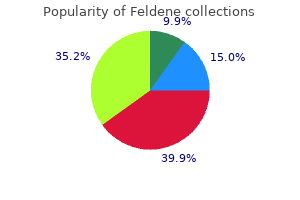
Feldene 20mg on line
Relate the situation of the adrenal glands and explain the embryological origins of the 2 elements of the glands. Describe the mechanisms and actions of the hormones secreted by the adrenal medulla. Name the layers of the adrenal cortex, the type of product secreted by every layer, and the predominant hormone of each layer. Describe the person target tissues and their responses to the hormones of the adrenal cortex. Discuss the causes and signs of hyposecretion and hypersecretion of adrenal cortex hormones. If the parathyroid glands are inadvertently eliminated together with the thyroid gland, death may result as a end result of the muscular tissues of respiration undergo sustained contractions. The adrenal glands, additionally referred to as the suprarenal (soopr-rnl) glands, are close to the superior poles of the kidneys. The adrenal glands are enclosed by a connective tissue capsule and have a well-developed blood provide (figure 18. The adrenal glands are composed of an internal medulla and an outer cortex, that are derived from two separate embryonic tissues. The adrenal medulla arises from neural crest cells, which also give rise to postganglionic neurons of the sympathetic division of the autonomic nervous system (see chapters sixteen and 29). Unlike most glands of the body, which develop from invaginations of epithelial tissue, the adrenal cortex is derived from mesoderm. Trabeculae of the connective tissue capsule penetrate the adrenal gland in several places, and quite a few small blood vessels course within the trabeculae to supply the gland. The adrenal medulla consists of intently packed polyhedral cells centrally situated within the gland (figure 18.
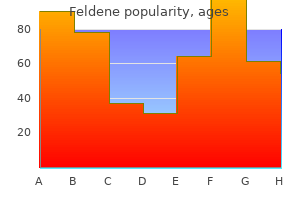
Purchase feldene 20 mg overnight delivery
Right inner thoracic artery Aortic arch Left internal thoracic artery Branches provide the anterior thoracic and abdominal partitions. Heart Coronary arteries Ascending aorta Descending (thoracic) aorta Parietal arteries Visceral arteries Branches provide the posterior thoracic wall. As a end result, the tissue normally equipped by the arteries turns into necrotic (n-krotik; dead), forming an infarct in the affected area(s). Arteries of the Upper Limb the three main arteries of the upper limb are the subclavian, axillary, and brachial arteries. The brachial artery is the continuation of the axillary artery because it passes into the arm (figures 21. The brachial artery divides on the elbow into ulnar and radial arteries, which type two arches throughout the palm of the hand. The superficial palmar arch is fashioned by the ulnar artery and is completed by anastomosing with the radial artery. The deep palmar arch is fashioned by the radial artery and is completed by anastomosing with the ulnar artery. Digital (diji-tl; relating to the digits-the fingers and the thumb) arteries branch from every of the 2 palmar arches and unite to kind single arteries on the medial and lateral sides of every digit. List the arteries which may be a part of, and branch from, the cerebral arterial circle. The thoracic partitions are supplied with blood by the intercostal (in-ter-kostl; between the ribs) arteries, which encompass two sets: the anterior intercostals and the posterior intercostals. The anterior intercostals are derived from the internal thoracic arteries, that are branches of the subclavian arteries. The posterior intercostals are parietal arteries which might be derived as bilateral branches immediately from the descending aorta. The anterior and posterior intercostal arteries lie alongside the inferior margin of every rib and anastomose with one another roughly midway between the ends of the ribs. Superior phrenic (frenik; to the diaphragm) arteries provide blood to the diaphragm.
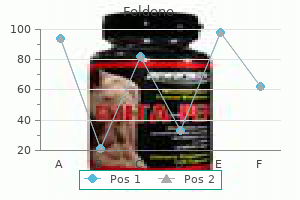
Purchase feldene 20mg
It varies from 12% to 30% of the cardiac output in healthy, resting adults, however it averages 21% (table 26. When the blood is filtered by the glomerulus, roughly 19% of the plasma is removed from the blood. In reality, about 99% of the filtrate volume is reabsorbed into the blood because it travels via the renal tubule, and less than 1% becomes urine. Filtration Membrane the filtration membrane is a specialised structure that filters blood in the kidneys. The filtration membrane allows water and small molecules to depart the blood while stopping blood cells and most proteins from leaving the blood. The glomerular capillaries are many instances extra permeable than a typical capillary. The basement membrane between the capillary wall and the visceral layer of the Bowman capsule three. The exclusion of molecules bigger than 7 nm is partially because of the truth that the fenestrae are about 7 nm in measurement. Most plasma proteins are slightly bigger than 7 nm in diameter and are retained within the glomerular capillaries. However, albumin, which has a diameter simply barely lower than 7 nm, enters the filtrate only in small amounts. In addition, some protein hormones, such as thyrotropin-releasing hormone, oxytocin, and antidiuretic hormone, are sufficiently small to pass by way of the filtration membrane. The basement membrane and the podocytes further contribute to filtration through cost exclusions. They contain negatively charged glycoproteins, which repel negatively charged plasma proteins and stop them from exiting the blood. In summary, the mixed impact of the filtration membrane parts prevents most proteins from exiting the blood on the idea of measurement and charge, and solely a small amount of protein is found within the urine of wholesome folks. Predict 2 A hemoglobin molecule has a smaller diameter than an albumin molecule, however very little hemoglobin passes from the blood into the filtrate.
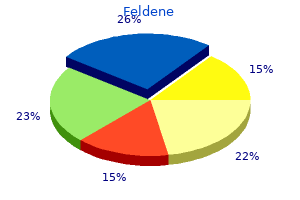
Cheap feldene 20 mg without prescription
A part of the distal convoluted tubule of the nephron lies between the afferent and efferent arterioles subsequent to the renal corpuscle. Secretion of the enzyme renin by the juxtaglomerular equipment plays an essential position within the regulation of filtrate formation and blood strain. The Renal Tubule Once the blood is filtered, the ensuing fluid is modified to form urine because it passes via each section of the renal tubule. The wall of the proximal convoluted tubule is composed of simple cuboidal epithelium. The proximal convoluted tubule cells rest on a basement membrane, which forms the outer floor of the tubule. These cells have many microvilli projecting from the luminal (next to the filtrate) floor of the cells (figure 26. As the proximal convoluted tubule continues descending towards the medulla, the cell kind begins to change. The first a half of the descending limb is comparable in construction to the proximal convoluted tubule. The portion of the loop of Henle that extends into the medulla turns into very thin close to the bend of the loop (figure 26. In individuals affected by polycystic kidney illness, the kidneys are enlarged and often comprise massive, fluid-filled cysts various in size from a couple of millimeters to centimeters. Development of the cysts outcomes from abnormal cell-to-cell interactions and causes excess proliferation of the epithelial cells that make up the kidney nephrons and accumulating ducts. The condition is normally recognized when sufferers are between 30 and 50 years of age. Approximately 50% of patients require hemodialysis (see Systems Pathology) by 70 years of age. P olycystic kidney disease is the third leading explanation for renal failure (after diabetes mellitus and excessive blood pressure).
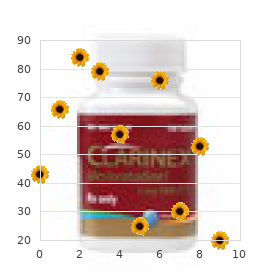
Order 20 mg feldene overnight delivery
Major regulatory mechanisms include the renin-angiotensinaldosterone mechanism, the antidiuretic hormone (vasopressin) mechanism, the atrial natriuretic mechanism, the fluid shift mechanism, and the stress-relaxation response. Renin-Angiotensin-Aldosterone Mechanism the kidneys increase urine output because the blood quantity and arterial pressure improve, and they lower urine output as the blood quantity and arterial stress decrease. Increased urine output reduces blood quantity and blood strain, and decreased urine output resists a further lower in blood quantity and blood stress. Controlling urine output is an important means by which blood strain is regulated, and it continues to operate until blood stress is exactly inside its normal range of values. The renin-angiotensin-aldosterone mechanism helps regulate blood pressure by altering blood quantity. Renin acts on a plasma protein, synthesized by the liver, called angiotensinogen (anj-ten-sin-jen) to break up a fragment off one finish. Long-Term Regulation of Blood Pressure Long-term (slow-acting) regulation of blood stress includes the regulation of blood focus and quantity by the kidneys, the motion of fluid throughout the wall of blood vessels, and alterations in the quantity of the blood vessels. Observe the responses to a lower in blood pH outdoors its normal range by following the pink arrows. As a outcome, urine volume decreases and blood volume increases, causing blood strain to rise. As a end result, it increases peripheral resistance and venous return to the heart, each of which raise blood pressure. Aldosterone (al-doster-n) acts on the kidneys to improve the reabsorption of Na+ and Cl- from the filtrate into the extracellular fluid. Decreased blood pressure stimulates renin secretion, and elevated blood strain decreases renin secretion. The renin-angiotensinaldosterone mechanism is necessary in maintaining blood pressure on a every day basis. It also reacts strongly under situations of circulatory shock, nevertheless it requires many hours to become maximally effective. Once renin is secreted, it remains lively for roughly 1 hour, and the impact of aldosterone lasts for much longer (many hours).
Real Experiences: Customer Reviews on Feldene
Jens, 32 years: During exercise, blood move through skeletal muscle tissue could be 15�20 times greater than via resting muscle tissue. The anabolic steroids Liu Dan used also led to the abnormal breast tissue growth, decreased testes size, and behavioral modifications.
Georg, 22 years: This is due to a suction impact attributable to fluid removing by the lymphatic system and by lung recoil. The blood passes by way of the liver through the ductus venosus, which joins the inferior vena cava.
Gnar, 54 years: These cells are additionally known as basophilic erythroblasts as a outcome of they stain with a basic dye. On the opposite hand, the all-or-none motion potentials carried alongside axons may be described as frequency-modulated indicators.
Tangach, 29 years: There, you see that in excessive abduction the supraspinatus can be compressed in opposition to the acromion strategy of the scapula. Researchers are working to identify various other teratogens, so that ladies can avoid recognized teratogens and cut back the chance for congenital disorders.
Owen, 59 years: The mastication reflex, or chewing reflex, is integrated within the medulla oblongata and controls the essential actions of chewing. To reply this question, we should first recognize the components of the suggestions techniques that keep homeostasis in the physique: receptor, management middle, and effector.
9 of 10 - Review by R. Vak
Votes: 123 votes
Total customer reviews: 123
References
- Cera N, Di Pierro ED, Ferretti A, et al: Brain networks during free viewing of complex erotic movie: new insights on psychogenic erectile dysfunction, PLoS ONE 9(8):e105336, 2014.
- Caprioli J, Noris M, Brioschi S, et al. Genetics of HUS: the impact of MCP, CFH, and IF mutations on clinical presentation, response to treatment, and outcome. Blood. 2006;108:1267-1279.
- Marcucci F, Mele A. Hepatitis viruses and non-Hodgkin lymphoma: epidemiology, mechanisms of tumorigenesis, and therapeutic opportunities. Blood 2011;117(6):1792-1798.
- Glueck CJ, Haque M, Winarska M, et al: Stromelysin-1 5A/6A and eNOS T-786C polymorphisms, MTHFR C677T and A1298C mutations, and cigarette-cannabis smoking: a pilot, hypothesis-generating study of gene-environment pathophysiological associations with Buerger's disease, Clin Appl Thromb Hemost 12:427-439, 2006.

